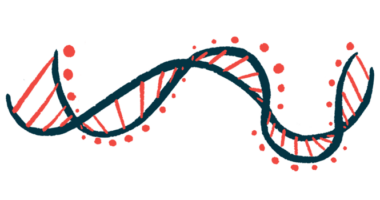New CMT-causing Mutations Found in Korean Study

Several novel mutations in aminoacyl-tRNA synthetase (ARS) genes were linked with Charcot-Marie-Tooth disease (CMT) in a recent study out of Korea.
“This study will be useful for performing exact molecular diagnoses and providing reference data for other population studies,” its researchers wrote.
The study, “Variants of aminoacyl-tRNA synthetase genes in Charcot-Marie-Tooth disease: A Korean cohort study,” was published in the Journal of the Peripheral Nervous System.
ARS genes provide instructions for making the proteins needed to make tRNA (transfer RNA), a kind of intermediate molecule that is used in the process of making proteins when a gene is read.
Several ARS genes are among the more than 130 genes in which mutations are known to cause CMT and related diseases. However, the role of ARS genes in CMT — and the association of individual mutations with specific disease features — remains incompletely understood.
Here, a team of researchers in South Korea conducted an analysis of 1,064 Korean CMT families, aiming to identify ARS genes associated with the disease. The families were analyzed via whole-exome sequencing, a technique that determines the sequence of the genome parts that code for proteins (the exome, about 1–2% of the total genome).
Results from 13 families revealed 12 ARS gene mutations that were either pathogenic (disease-causing) or likely pathogenic. Seven of the 12 mutations have not been reported before, according to the researchers.
Specifically, there were four mutations in the ARS gene GARS1, and two each in the genes AARS1, HARS1, WARS1, and YARS1.
Analyses of the individual mutations indicated they were likely to impair the structure of the proteins that are encoded by the respective genes.
The researchers noted that WARS1 mutations have previously been reported to cause a disease called hereditary motor neuropathy (dHMN), but not CMT. dHMN and CMT both are similar diseases, but while CMT patients generally have sensory symptoms, people with dHMN do not.
The two patients with WARS1 mutations in this study both had sensory involvement, suggesting that they had CMT and not dHMN.
“Therefore, WARS1 mutations may cause CMT and dHMN with wide-ranging clinical phenotypes [manifestation],” the researchers concluded.
The overall frequency of ARS gene mutations among the analyzed CMT patients was 1.22%. Excluding patients with PMP22 duplications — that result in CMT type 1A, the most common type of CMT — ARS gene mutations were seen in 1.83% of CMT patients.
The team noted that many of the CMT patients with ARS gene mutations exhibited hyperreflexia, or unusually active reflexes.
“Therefore, genetic testing for ARS gene variants is recommended in patients with CMT or dHMN showing hyperactive deep tendon reflexes,” the scientists wrote.







